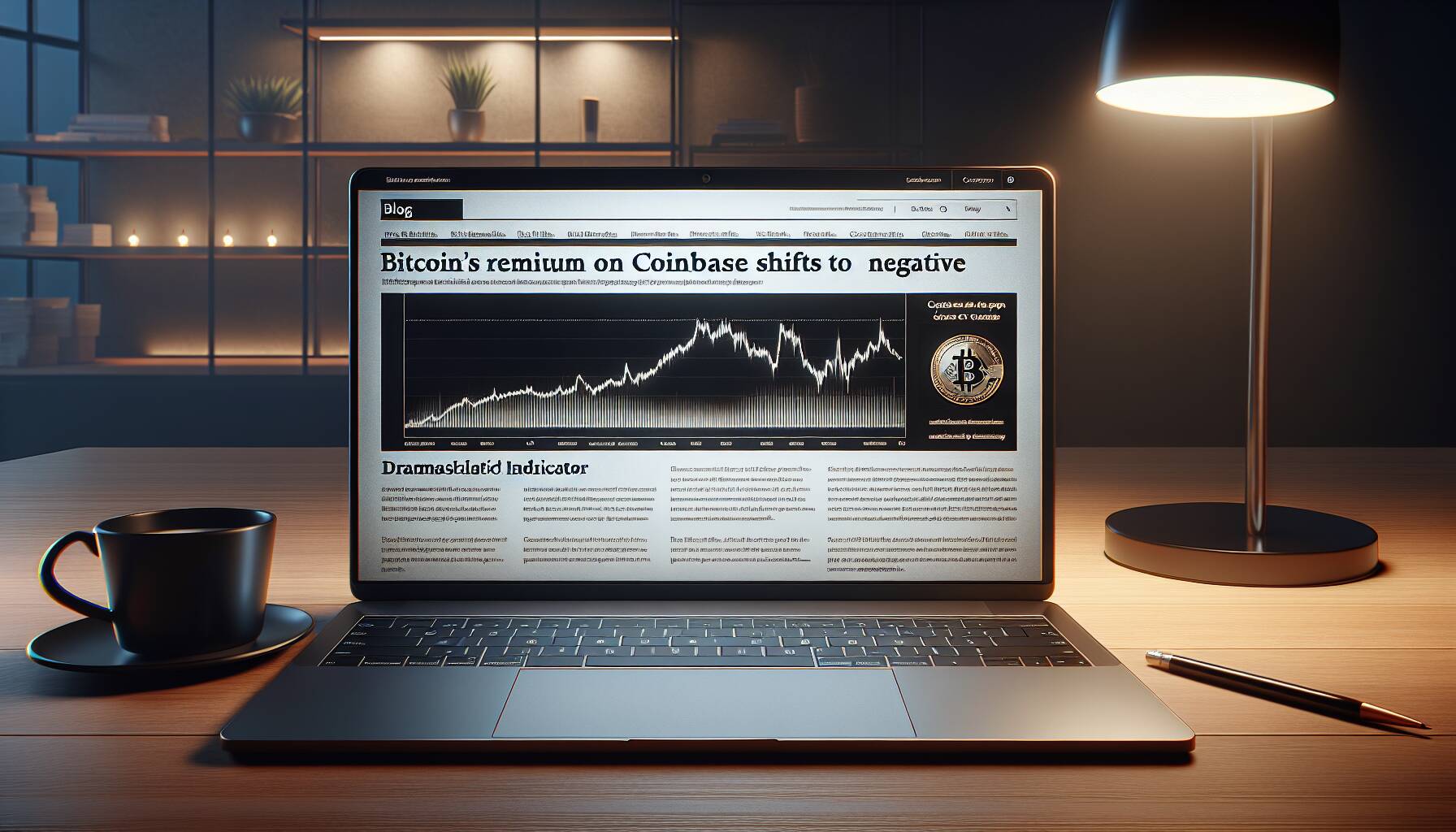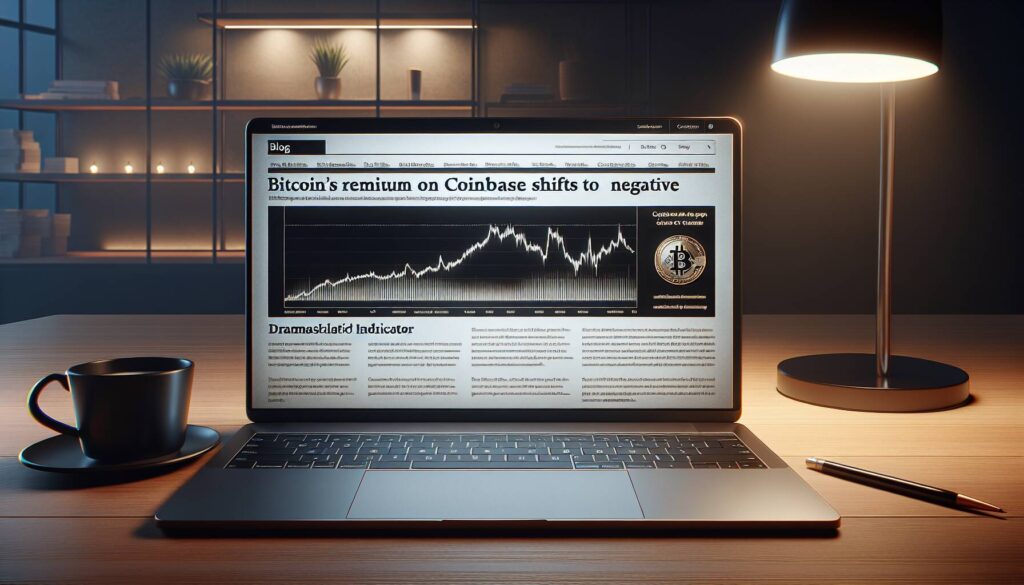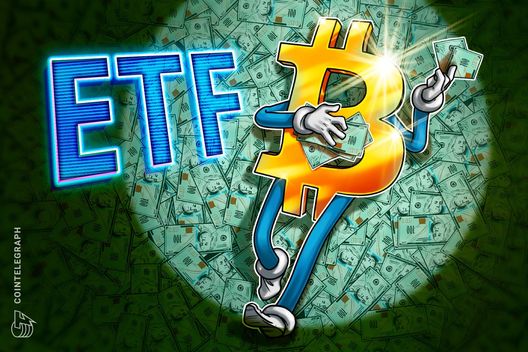In a recent turn of events for the cryptocurrency market, Bitcoin’s (BTC) premium indicator on Coinbase has taken a notable dip, reflecting a shift in trader sentiment. According to data sourced from Coinglass, this premium, which compares Bitcoin’s price in U.S. dollars on the Coinbase exchange against its price in tether on the Binance platform, has gone negative for the first time since the significant market downturn experienced on February 3rd. This change hints at a growing caution among traders within the Nasdaq-listed exchange, especially as they await the U.S. Consumer Price Index (CPI) release scheduled for Wednesday.
The landscape in the cryptocurrency world is ever-changing, and this recent pivot suggests that U.S. investors are adopting a more conservative stance. Meanwhile, traders on offshore exchanges appear to be leading the way in price recovery, pushing Bitcoin from earlier lows around ,900 to approximately ,000. Historically, a bullish phase in Bitcoin’s price trajectory has been characterized by trading at a premium on Coinbase, indicative of robust support from U.S. investors.
In early November, this Coinbase premium surged to two-month highs, tracking Bitcoin’s ascent beyond the ,000 mark, an area previously uncharted for the leading cryptocurrency.
As traders digest this latest indicator along with upcoming economic data, many in the crypto community are closely monitoring these developments, eager to see how they will influence Bitcoin’s future path.

Impact of Bitcoin’s Coinbase Premium Indicator Flipping Negative
This significance of the Bitcoin (BTC) Coinbase premium indicator offers insights into market sentiment and potential price movements, which could directly affect investors and traders. Here are the key points to consider:
- Coinbase Premium Indicator: This indicator measures the price difference between BTC’s dollar price on Coinbase and its price in tether on Binance.
- Flipped Negative: The indicator has turned negative for the first time since the February 3 crash, signaling cautious sentiment among traders on Coinbase.
- Impact of U.S. CPI Release: The caution from Coinbase traders arises ahead of the upcoming U.S. Consumer Price Index (CPI) release, which can significantly influence market reactions.
- Market Recovery: The price of Bitcoin has seen recovery from lows near ,900 to ,000, driven by offshore traders, indicating a potential divergence in trading strategies.
- Historical Context: Historically, a premium on Coinbase has been linked to strong bullish runs, reflecting confidence from U.S. investors.
- Two-Month Highs: Prior to this change, the premium soared to two-month highs in early November as BTC traded above ,000, marking a period of intense investor interest.
Understanding these trends is critical for investors, as they reflect not only market sentiment but also potential future movements in Bitcoin’s price.
Insights into Bitcoin’s Shifting Premium Dynamics
The recent shift in Bitcoin’s (BTC) Coinbase premium indicator to negative territory has sparked considerable interest in the cryptocurrency landscape. This indicator, which outlines the price disparity between Bitcoin’s values on prominent exchanges, signals trends that could reshape trading strategies and investor sentiment.
Comparing this development to similar market conditions, we observe a divergence in trading behaviors between U.S.-based and offshore investors. While the decline in the Coinbase premium suggests that traders on Nasdaq-listed platforms are treading carefully, a contrasting peak in pricing on Binance highlights a vigorous leadership from international markets. This juxtaposition emphasizes a growing divide between regional investor confidence levels. Historically, a premium skewed towards Coinbase has been a bullish sign, reflecting robust interest from U.S. traders, whereas a dip often indicates increased market caution or profit-taking.
Competitive Advantages: The current market sentiment surrounding Bitcoin could benefit international investors leveraging Binance, who may find opportunities to capitalize on the price recovery despite the cautious stance of Coinbase traders. This dynamic might empower them to position themselves advantageously, potentially increasing their market share as U.S. investors recalibrate their strategies. Furthermore, this trend could entice investors looking to engage in arbitrage, taking advantage of the price discrepancies between platforms.
Disadvantages and Potential Issues: On the flip side, the downturn in Coinbase’s premium poses a challenge for U.S. investors, who may struggle with uncertainty leading up to critical economic data releases, such as the upcoming U.S. CPI report. This caution could result in missed opportunities for profit if the market rebounds unexpectedly. Additionally, prolonged hesitation may result in lost ground as international traders dominate the landscape, potentially leaving U.S. institutions to lag behind in a rapidly evolving market.
In supporting narratives, it becomes evident that while Bitcoin’s market participants are navigating complex waters, both streamlined trading strategies and broader economic indicators will dictate who thrives and who falters in this volatile environment. Such dynamics underline the significance of continually assessing both regional trends and broader market sentiment to maintain a competitive edge.

















